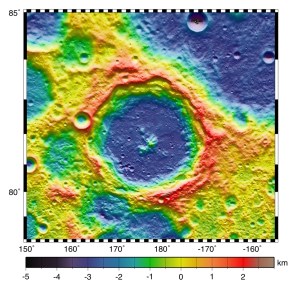
Plaskett Crater
At 109 km in diameter, Plaskett Crater displays the morphology of a typical complex crater. For example, both a central peak and terraced crater walls can be seen in Plaskett. Its central peak formed during the impact process when material at depth below the crater floor rebounded due to the excavation of the crust and resulting release in pressure. Central peaks are interesting to scientists because they provide a glimpse of what lies deep below the lunar surface. LOLA data can be used to study the morphology and depth of craters like Plaskett in unprecedented detail, and in so doing, increase our understanding of the impact process.
- X
https://science.nasa.gov/image-detail/plaskett/
Size1024x968px




























